Earliest history
The site upon which Ashurst stands was originally in the ownership of Thomas Oxley. He was recorded as residing in the now demolished Martello Lodge/House until 1852. Sale documents indicate that Oxley was owner of the entire site including much of the land on the southern side of Military Road from at least 1831. At this time the land upon which the adjoining Kilmarnock House was sub-demised to the Rev. Nicholas Baker and Joseph Moore Labarte. In the Descriptive Particulars of Lot 1 (the Ashurst site) it is stated that William Cary Dobbs, Esq had a lease on the property from 1st November 1852 and must have been living in Martello Lodge at the time of the auction of the Oxley Estate by the Commissioners for the Sale of Incumbered Estates on 24th April 1856. Dobbs was obviously successful at the auction and began work on the construction of Ashurst soon afterwards.

Extract from unpublished history of Killiney dating from c.1930’s (additional notes by KillineyHistory.ie are in italics)
Ashurst was so called from a very large tree opposite its front door, which became dangerous and was cut down in 1893. This older Ashurst had a number of small bedrooms, a large dining room with the same sized drawing room above. William Cary Dobbs, a barrister, and afterwards Judge of the Landed Estates Court was accustomed to come down here from his residence in 21 Fitzwilliam Place for the summer months. About the year 1855 (1856) he decided to purchase outright the whole property with 2 acres of land. On these lands he built the present Ashurst, the architect being John Lanym. The grounds also included a small cottage known as Martello Cottage (now Kilmuire) not to be confused with Martello Farm already mentioned. The occupant of this cottage (Miss Nicola Betham) assured Mr. Dobbs that her whole happiness depended on her owning the house as she wished to live and die there. She was so insistent that at last he sold it to her with one acre of land but reserving the head rent which is still part of the Dobbs property. Within 18 months this lady had sold the place to Miss Exham who lived there for many years. Later Mr. Frank North purchased this cottage and turned it into the present Little Anstice. (Little Anstice was actually built within the grounds of Martello Cottage, both of which still exist today although Martello Cottage is now called Kilmuire.)
Ashurst in 1888
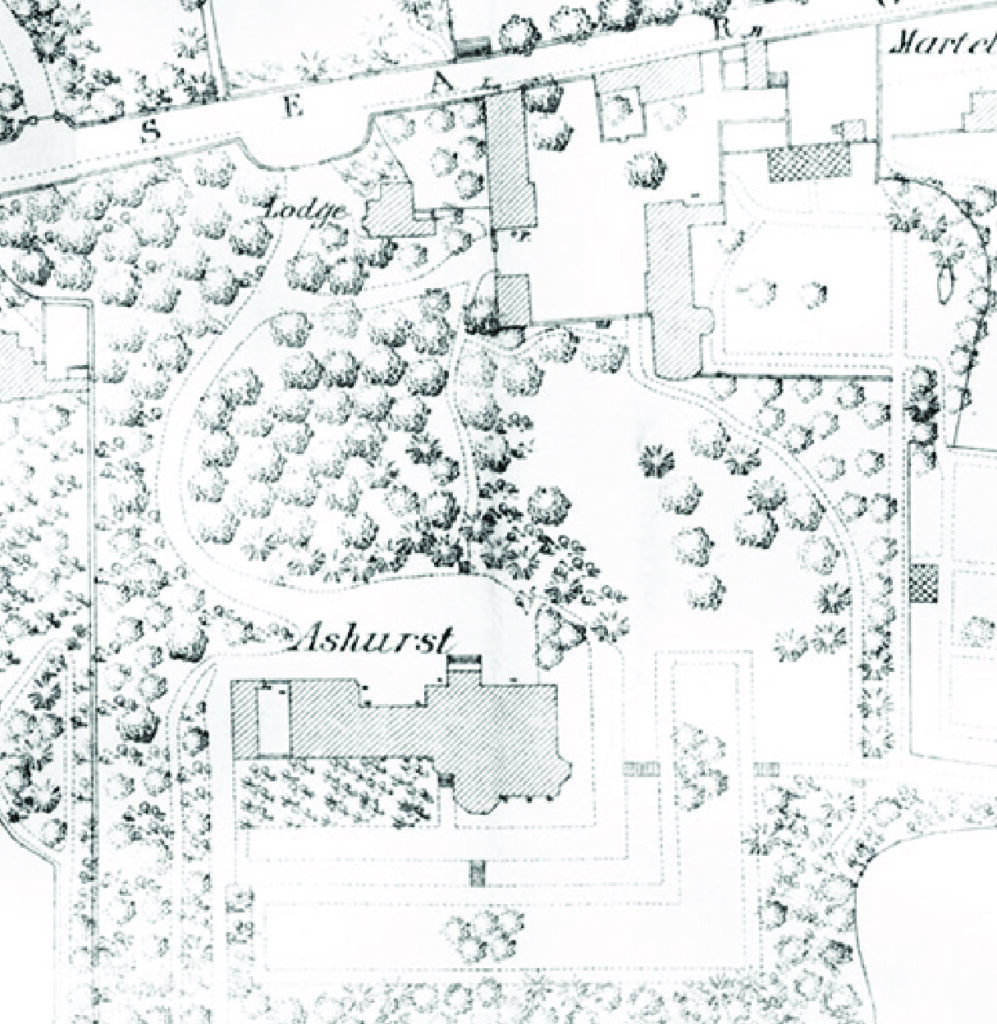
Description by Peter Pearson from ‘Between the Mountains and the Sea’ 1998.
Ashurst was built in 1861. The Dublin Builder informs us that ‘a large mansion is being commenced under the directions of Messrs Lanyon, Lynn and Lanyon, architects, for the Hon. Judge Dobbs, and will cost some £4,000 or £5,000’. It remained in this family but was mostly let, until it was sold as a residence for the Archbishop of Dublin, John Charles McQuaid.
It is a very large, redbrick mansion, somewhat severe and institutional in character, though it is attractively set amidst mature trees and gardens. It was designed by W. H. Lynn in the Gothic manner, and makes clever use of yellow and slate-coloured brickwork. A tall, square tower which rises above the entrance, and once contained water tanks, was heightened by the Archbishop to create a viewing room. There is a well-built, granite gate-lodge on the Military Road.

As described by John O’Sullivan in ‘The Book of Dun Laoghaire’ 1987
Ashurst, on Military road, Ballybrack, was built about 1860 for the Right Honourable Judge Dobbs of the Landed Estates Court. It remained in the possession of the Dobbs family until it was sold to the then Catholic Archbishop of Dublin, Most Rev. John Charles McQuaid. Miss Dobbs was a keen collector for the lifeboat and having met the Archbishop mentioned that she was about to sell her home and he decided to view it. He liked it when he saw it. She bought his previous house in Delgany. The Archbishop heightened the existing tower and cupola which has a viewing room therein.
Newspaper report which appeared in The Freeman’s Journal of 12 January 1876
VICEREGAL RESIDENCE AT BALLYBRACK. –His Grace the Duke of Abercorn will, with some members of his family, take up his residence about the end of the present week at Ballybrack. The house which will be his Grace’s sea residence for some time is Ashurst, the property of Mrs. Dobbs, widow of the late Judge Dobbs, from whom he has taken it. It is understood that the chief reasons for his Grace taking up his abode during the season in this quarter is in consequence of the delicate state of health of her Grace the Duchess of Abercorn, who has been for some time past seriously indisposed and has been ordered by her medical advisors a seaside sojournment. There could be no place better suited for the resuscitation of her Grace’s health than the delightful locality of Ballybrack, which has been frequently recommended for its bracing qualities. Ashurst, which had been the abode of the late Judge Dobbs, is one of the most beautiful and picturesque residences in the county Dublin, The present mansion, which is most commodious and extensive, contains several suits of apartments. The house is in the secular Gothic style of architecture, was built 14 years ago, and the adjoining grounds tastefully planted, the gardens being also laid out with exquisite care, and some fine trees shelter it from the east wind. The house is situate on the south side of Killiney Hill, and commands a most charming prospect, an uninterrupted sea view, extending on the east, and Bray Head, the Dublin and Wicklow mountains, extending in panoramic beauty on the other side. The house had been formerly occupied by Lord Sandhurst for over a year.
Ashurst Dairy
It would appear that the buildings vacated by Dobbs after the completion of Ashurst were put to use as a dairy serving the local area. Mrs. Dobbs placed an advert looking for ‘a Man and his wife to take charge of a small dairy and laundry.’ The enterprise obviously expanded as the adverts from c. 1893 which were placed by R. C. Dobbs indicated that the dairy would take milk from Wicklow and Wexford farmers. In later years when the dairy business had ceased to operate from this location the buildings became home to many local families who were reported to be living there in poverty and squalor in the early 1950’s. The complex was known as Ashurst yard at this time.
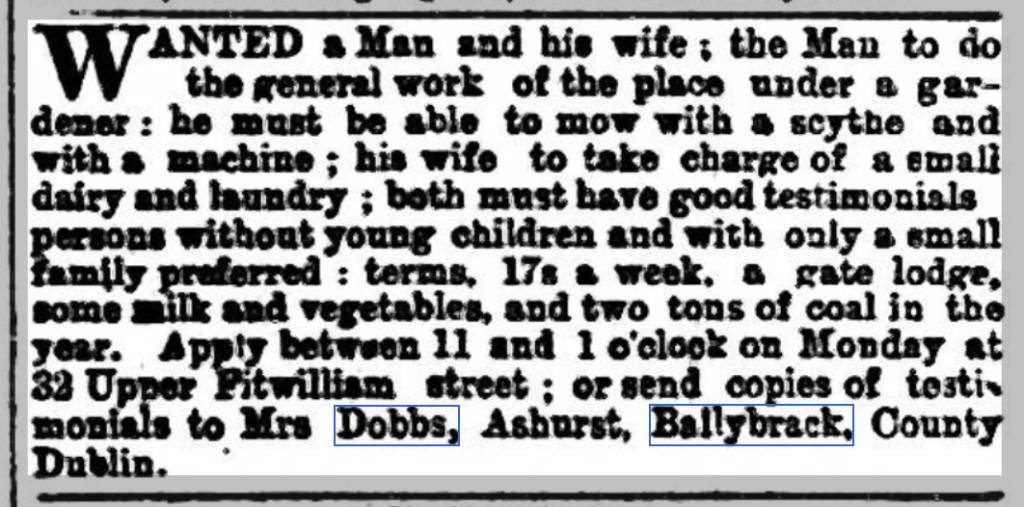
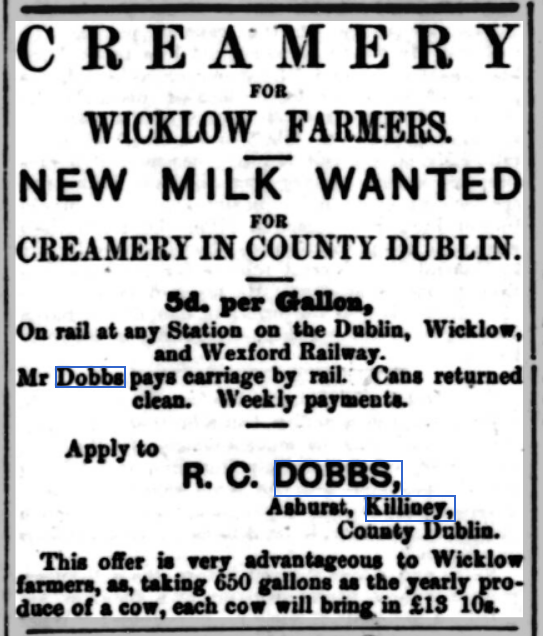
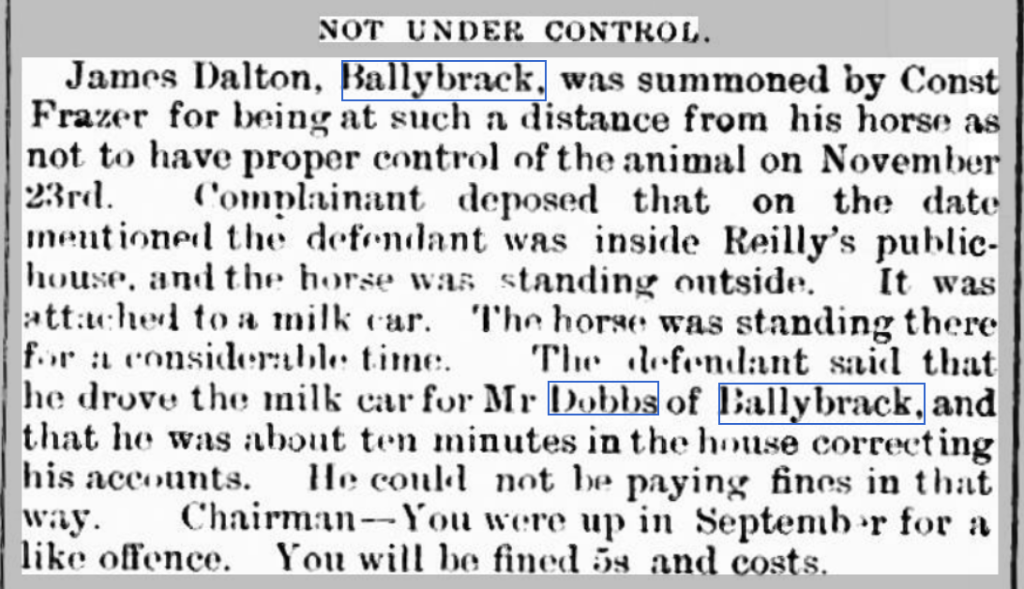
Ashurst Yard housing in 1950
An article which appeared in The Times Pictorial in March 1952 cast a light on the housing crisis which was being felt in the supposedly affluent Killiney and Ballybrack area. Ashurst yard came in for special mention.
‘Ashurst Yard is another sore point with the Committee men. At one time a dairy, the cow-byres were ‘converted’ to dwellings. And there are no sanitary arrangements. Children play in the pretty-to-look-at cobbled courtyard and, in the background, framed by trees, is the romantic silhouette of a fine mansion: the summer residence of the Archbishop.’
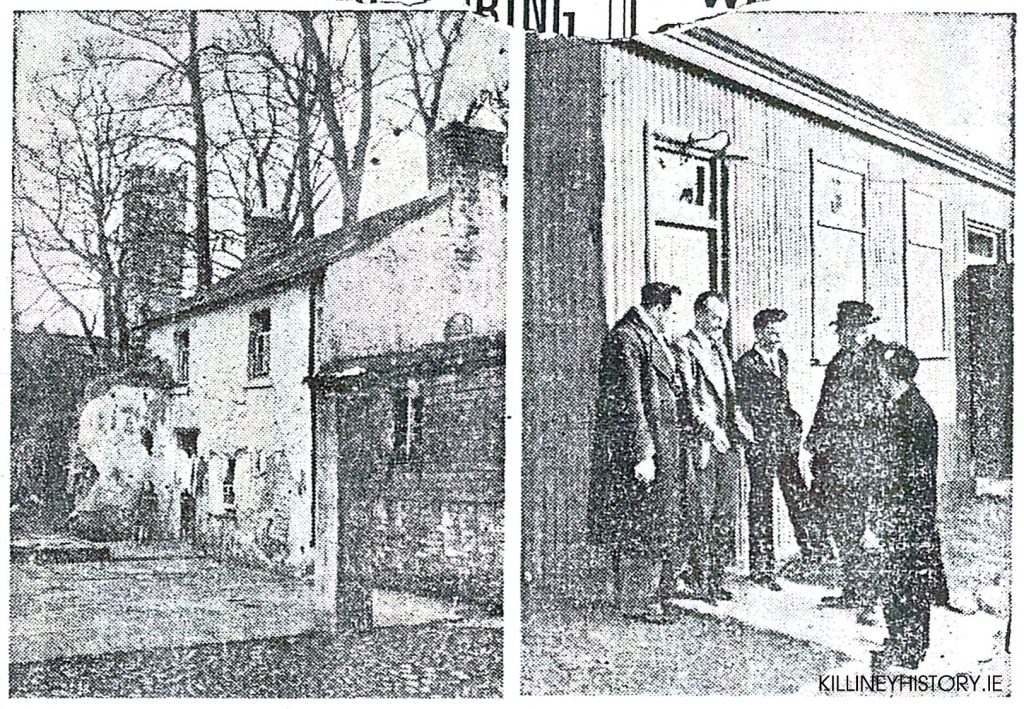
Works to Ashurst in c.1930
Records held in the Irish Architectural Archive record the layout of the house and site at this time. The expanded dairy complex can be seen fronting directly on to Military Road. The architect, for what appears to have been minor works, was W. M. Mitchell & Sons, 6 Merrion Square.

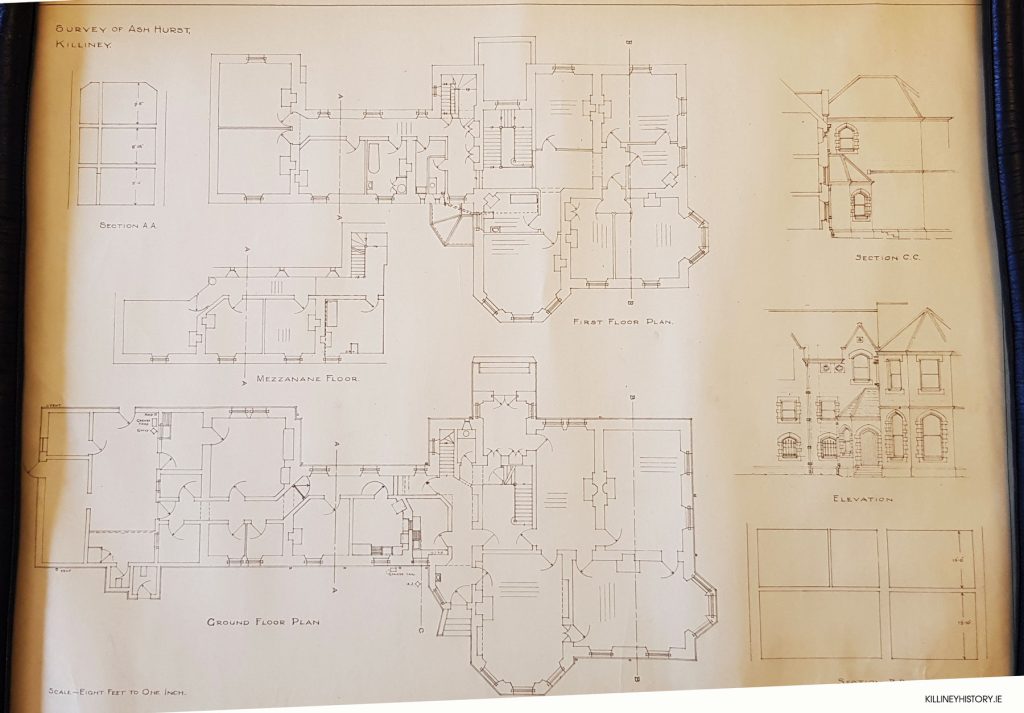
Occupants over the years from Thom’s Directory
| Year | Occupant |
| 1858 | Dobbs, Wm. C. MP (from Post Office Directory of 1858) |
| 1860 | Judge Dobbs |
| 1869 | Dobbs, Hon. Wm. Cary, Judge LEC |
| 1870-1890 | Dobbs, Mrs |
| 1892-1905 | Dobbs, R. C. Esq Barrister |
| 1907-1920 | Ferrier, Alex F. Esq |
| 1924 | Vacant |
| 1926-1928 | Boydell, Jas. F. |
| 1930 | Vacant |
| 1932-1940 | Dobbs, Arthur |
| 1943 | Vacant |
| 1947 | Ashurst Hotel & Poultry Farm |
| 1947-1950 | Archbishop McQuaid. The house was renamed Notre Dame des Bois. |